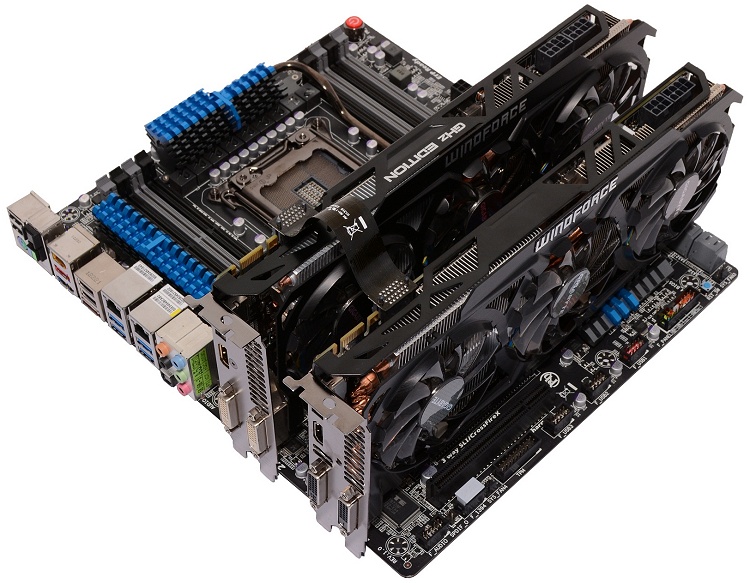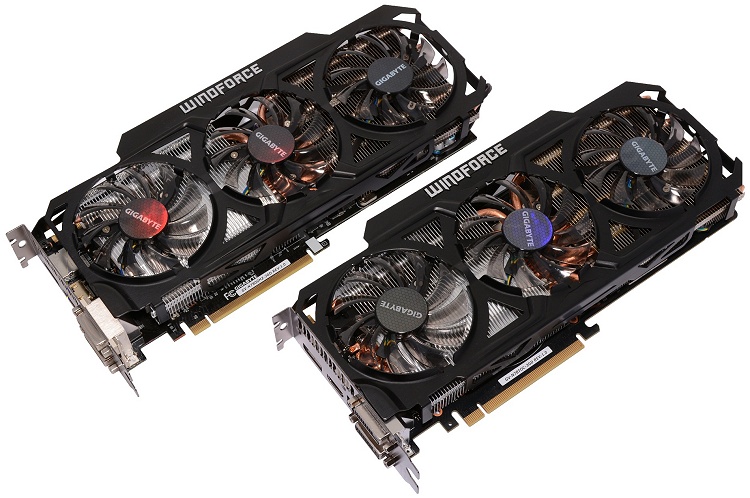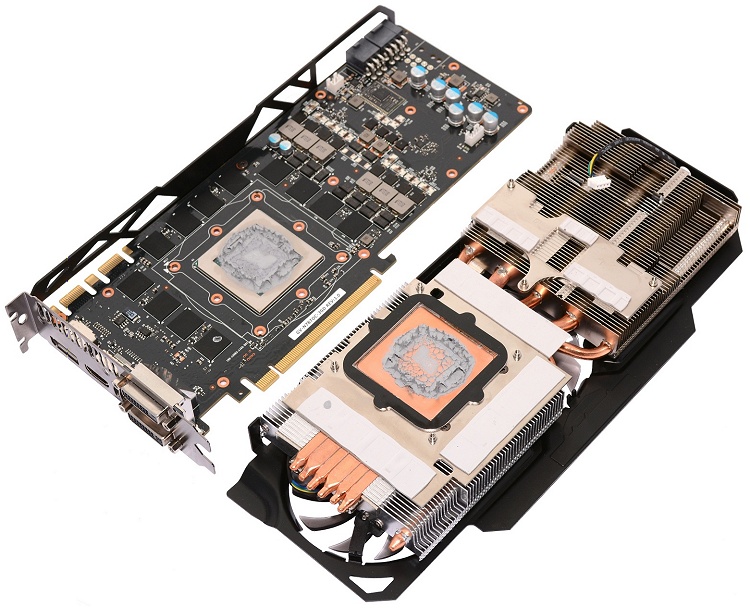Gigabyte GTX 780 Ti OC & Gigabyte GTX 780 GHz Edition Review - jeffreycomman99
The graphics card market has experienced some awful turns lately even though AMD and Nvidia haven't made serious-minded architectural changes in 2013. Nearly recent GPUs experience been rebadges, while a handful are just extensions of previous-gen technology, including the flagships from some camps. The R9 290X's Hawaii XT core boosted the operation of the HD 7970's Tahiti XT effect around 38% with a memory bus that's 33% wider, while the GTX Colossus is powered past a version of the GTX 680's GPU, except information technology's 90% bigger!
Having traded performance blows, both companies are tightening their pricing with the $400 R9 290 forcing the GTX 780 down to $500 from $650, further invalidating the GTX Titan, which is effectively history aft the announcement of the GTX 780 Ti that we'll be testing today.

Nvidia's a la mode offering packs 7% more CUDA cores and 17% increased bandwidth for $700 -- 30% less than the Titan, which is still $1,000 new just in case you want one for your museum. Information technology may only be a tuned GTX 780, but we expect Nvidia's new Cordyline terminalis calling card to be the fastest single-GPU offering approximately.
Equally if it wasn't already fast sufficient, Gigabyte has militarized its GTX 780 Ti with a massive air cooler that can palm 450W of heat, allowing the company to ship its stochastic variable of Nvidia's newcomer with a 17% overclock.

The company has also been temporary on separate overclocked GTX 780s, including a "Gc Edition" (non official Nvidia terminology) that features the duplicate 450W cooler, allowing a core clock of 1.02GHz operating room 18% higher than the accepted version of the card. We're Here, course, to reckon how these fit into today's crowded only nonetheless interesting and heated enthusiast lineup.
GB GeForce GTX 780 Ti and 780 Gigacycle per second Edition in Detail
The GTX 780 GHz Variant and GTX 780 Ti OC are similar enough that we distinct to cover them together. The GTX 780 reference board measures 26.7cm long while Gigabyte's cards are slightly yearner with their upgraded cooler stretching 29cm (their boards are notwithstandin 26.7cm lank). The display outputs remain criterion including deuce dual-colligate DVIs, united HDMI and one DisplayPort connector.


With 2304 CUDA cores, the GTX 780 launched with 50% more cores and 50% more than memory than the GTX 680. Half dozen 64-bit memory controllers even out a 384-bit wide bus and Nvidia's spec pairs the GPU with GDDR5 memory clocked at 6008Mhz, which provides capable 288.4GB/sec of peak bandwidth.

The 2304 CUDA cores in its 12 SMX units are clocked at 863MHz by default, though exploitation Boost 2.0 they can exist clocked up to 902MHz in certain scenarios. Nvidia's second-gen GPU Boost technology works in the background, dynamically adjusting the GPU's clock upper supported operative conditions.
This is where Gigabyte has made the biggest changes, accretive the GTX 780 Gigacycle Edition's home clock to 1019MHz, patc the boost clock exceeds 1GHz at 1071MHz. This 18% overclock should be sufficient to deliver Titan-care performance, while the GTX 780 Ti and Gigabyte's OC model take things even further.

The reference GTX 780 Ti boasts 2880 CUDA cores, 25% more than the GTX 780, bringing the SMX unit count up to 15 with each clocked at 875MHz (928MHz via boost). Nvidia upgraded the Titanium's with the 7GHz GDDR5 memory you'll get on the GTX 770, allowing for a bandwidth of 336.4GB/s using the 384-morsel bus.
GB has significantly increased the clock zip of its GTX 780 Si OC posting, hitting a base of 1020MHz with a 1085MHz boost time. The party doesn't seem to experience grazed the memory oftenness, but that makes gumption since it's already running at 7GHz. Information technology did add a solid triple sports fan cooler, nevertheless.

The GTX 780 GHz Variation and GTX 780 Atomic number 2 OC maintain their overclocked frequencies via the WindForce 3X's trio of 75mm fans as fit arsenic Gigabyte's exclusive "Triangle Cool" technology, which uses a serial of fins and triangular clip modules to better undeviating airflow all over the heatsink.


Two 8mm and four 6mm copper heatpipes cool the memory chips and power phase. The heatsink is done up in an atomic number 13 shroud that looks nicer than the emeritus plastic nonpareil as well as an aluminum back denture for extra protection. All told, Gigabyte says its design cools 20% better than Nvidia's cite.


The GHz Version's external top executive configuration has also been upgraded from the touchstone GTX 780 with two 8-pin PCIe superpowe connectors while the GTX 780 Te OC has the standard 6-pin/8-pin configuration. Both have a TDP of 250W, 28% greater than the GTX 680 so Nvidia recommends a 600W ability supply.
Source: https://www.techspot.com/review/738-gigabyte-geforce-gtx-780-ti-ghz/
Posted by: jeffreycomman99.blogspot.com


0 Response to "Gigabyte GTX 780 Ti OC & Gigabyte GTX 780 GHz Edition Review - jeffreycomman99"
Post a Comment